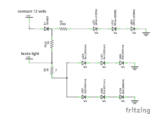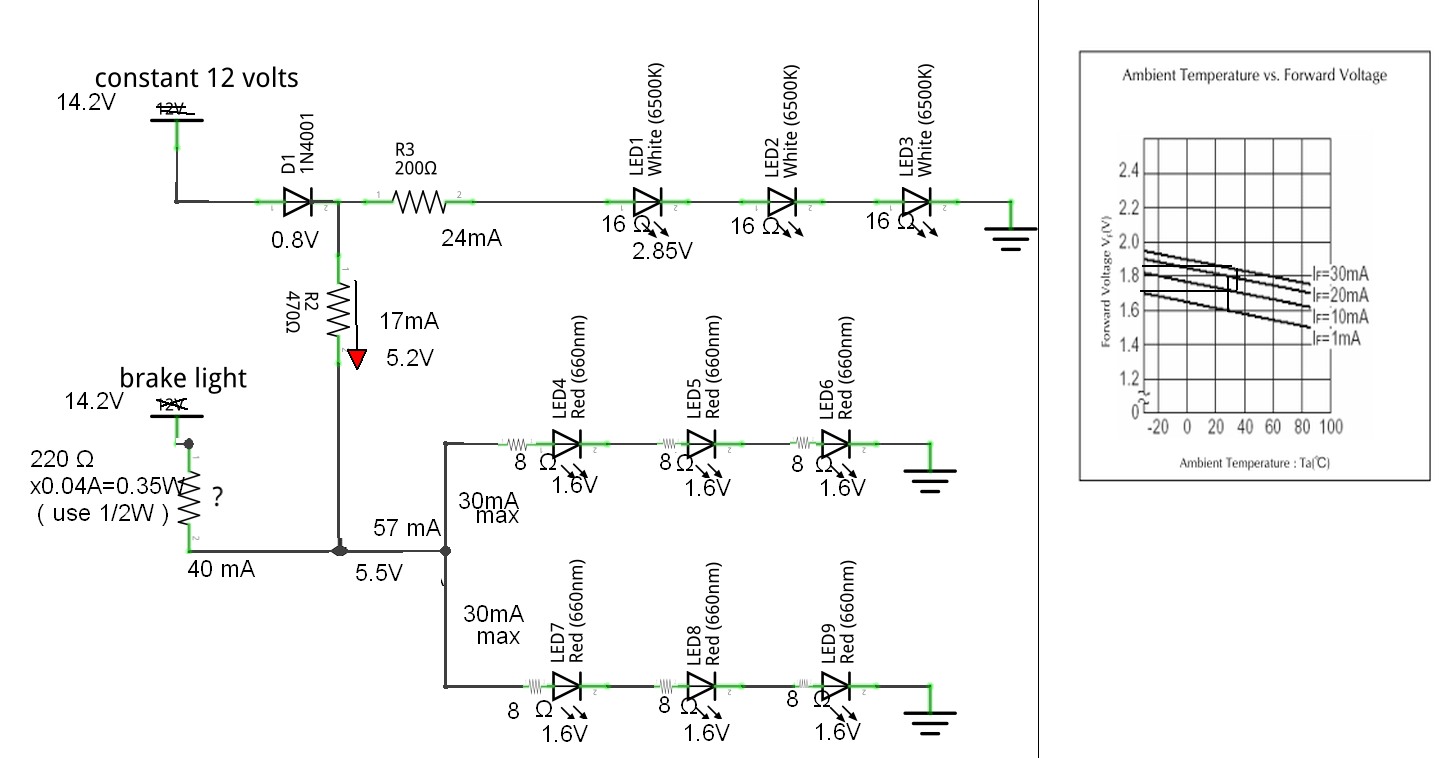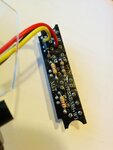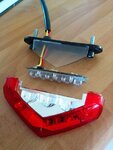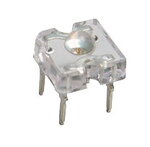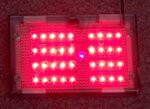tjpc
Newbie level 4
Hello to all from a noob!
I'm trying to fix a broken moped tail light (led based). A power spike burned a resistor so bad, it's impossible to read the colour codes on it.
Now I would really appreciate some help in calculating the needed resistance value so I can replace the resistor. I've drawn a schematic of the circuit based on my poking-around-with-a-multimeter skills :grin: I'll attach the drawing to clarify the circuit.
The light works with two 12 volt power wires: a constant, always-on 12 volt wire that supplies power for the license plate light (3 white leds, LED1 to LED3) and also power for the six red tail light leds. The brake light wire provides 12 volts when braking, and from what I understand it makes the red leds (LED4 to LED9) shine brighter than normal by bypassing the R2 resistor.
The blown resistor is R1 (marked with a ?) in the schematic. What resistance value should it have? I've tried to read up about resistors in series and parallel, but this gets too complicated..
TL;DR: What should the value of R1 be?
Any help would be appreciated!
-Tommy
I'm trying to fix a broken moped tail light (led based). A power spike burned a resistor so bad, it's impossible to read the colour codes on it.
Now I would really appreciate some help in calculating the needed resistance value so I can replace the resistor. I've drawn a schematic of the circuit based on my poking-around-with-a-multimeter skills :grin: I'll attach the drawing to clarify the circuit.
The light works with two 12 volt power wires: a constant, always-on 12 volt wire that supplies power for the license plate light (3 white leds, LED1 to LED3) and also power for the six red tail light leds. The brake light wire provides 12 volts when braking, and from what I understand it makes the red leds (LED4 to LED9) shine brighter than normal by bypassing the R2 resistor.
The blown resistor is R1 (marked with a ?) in the schematic. What resistance value should it have? I've tried to read up about resistors in series and parallel, but this gets too complicated..
TL;DR: What should the value of R1 be?
Any help would be appreciated!
-Tommy
